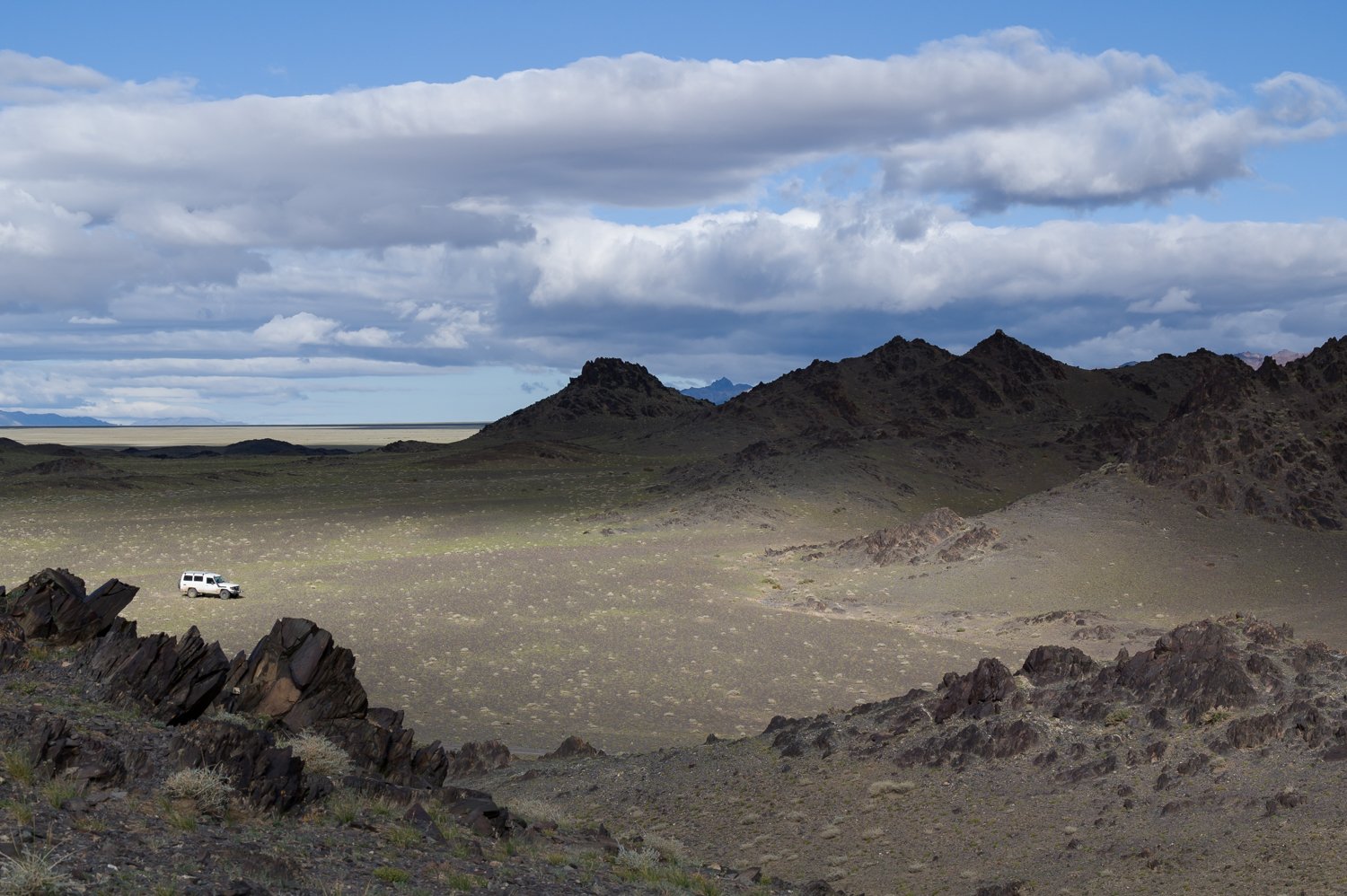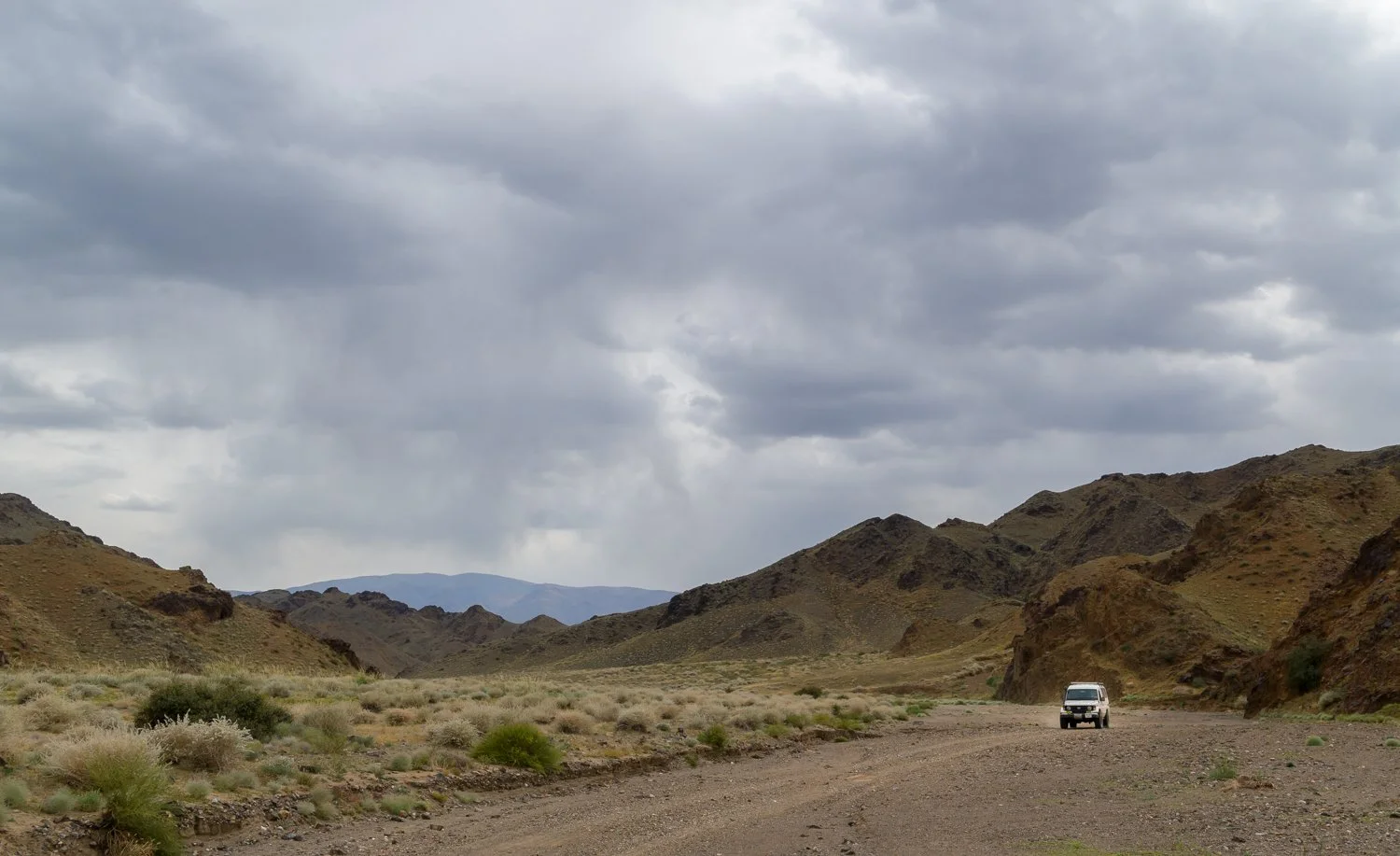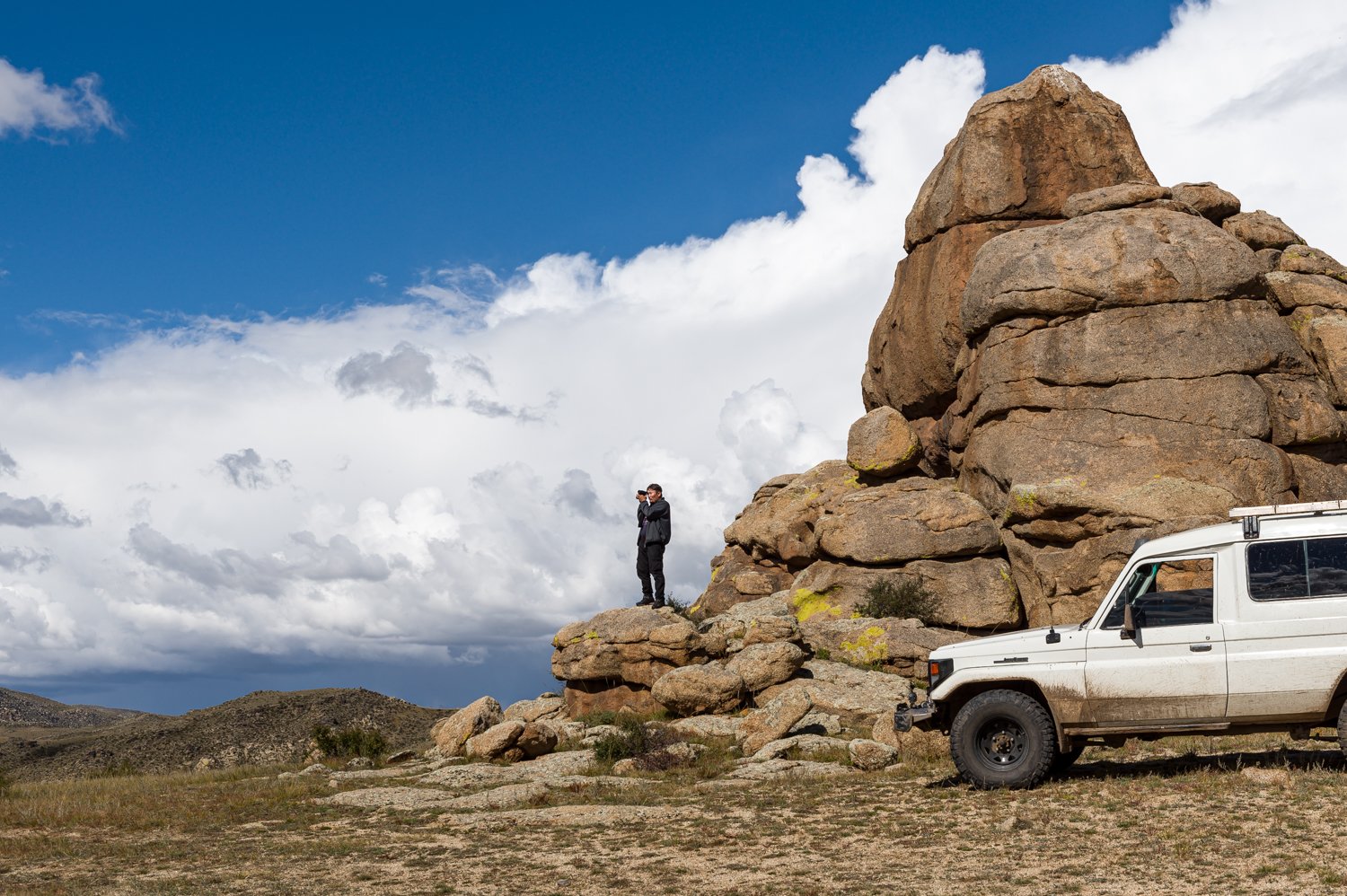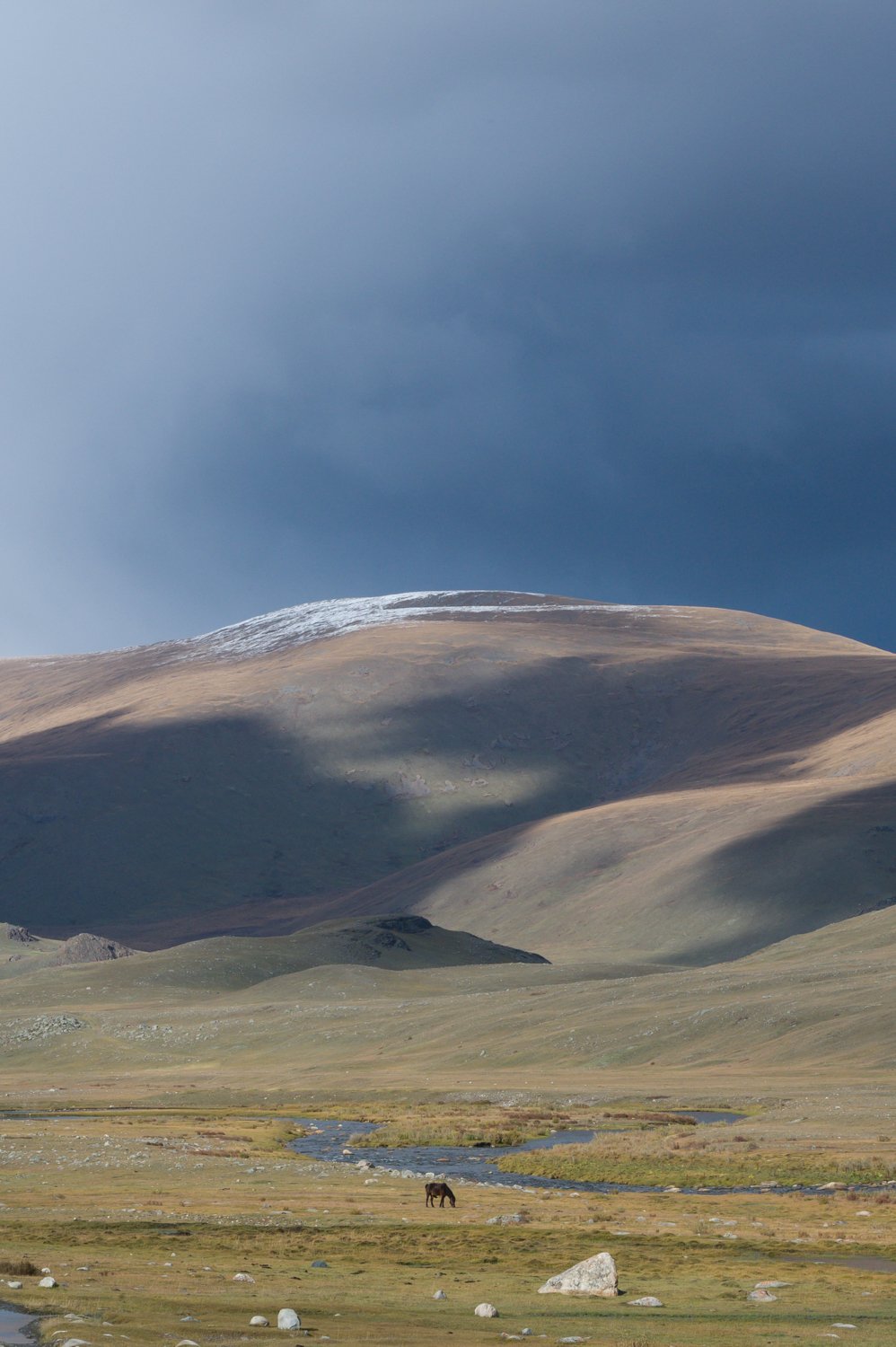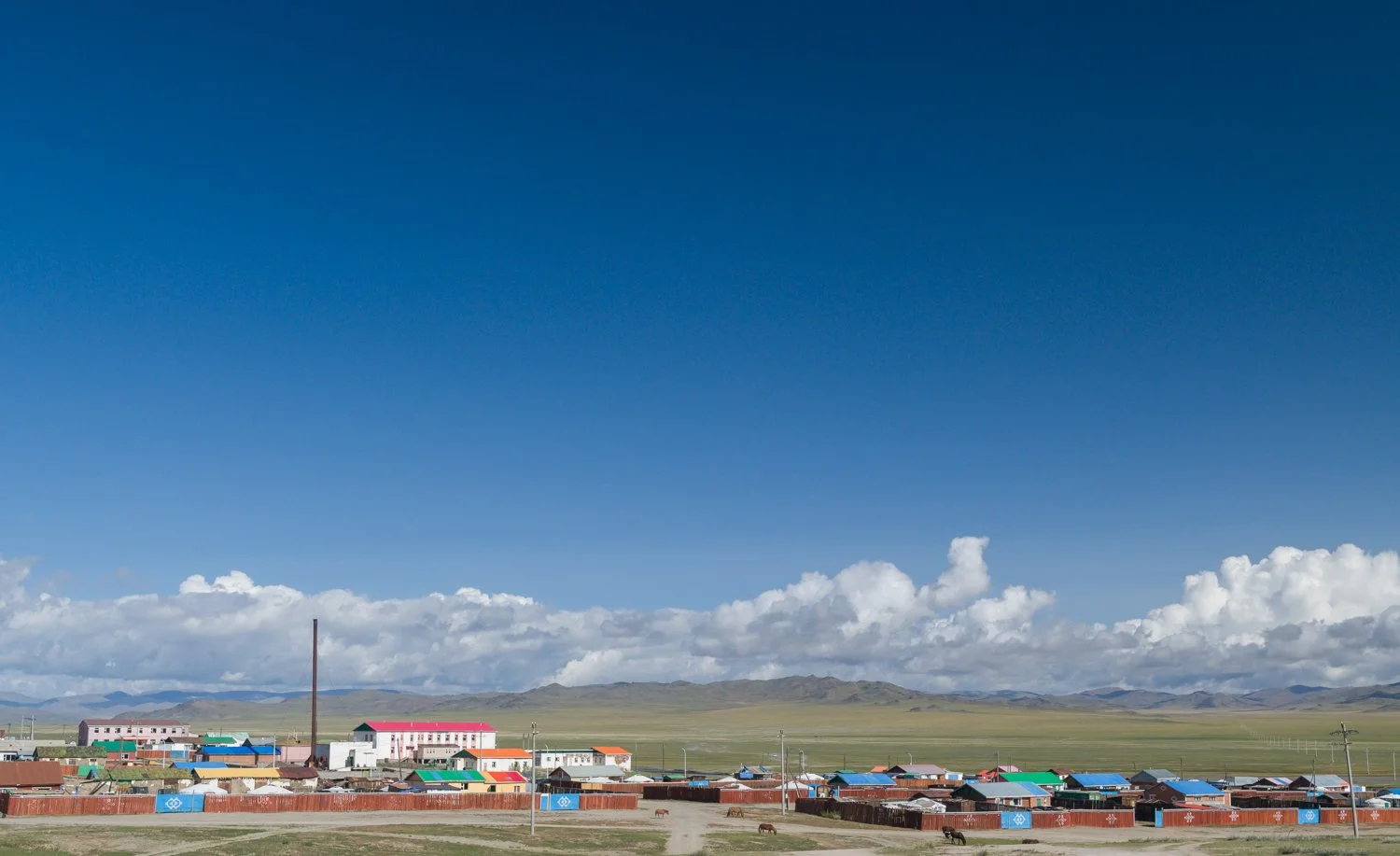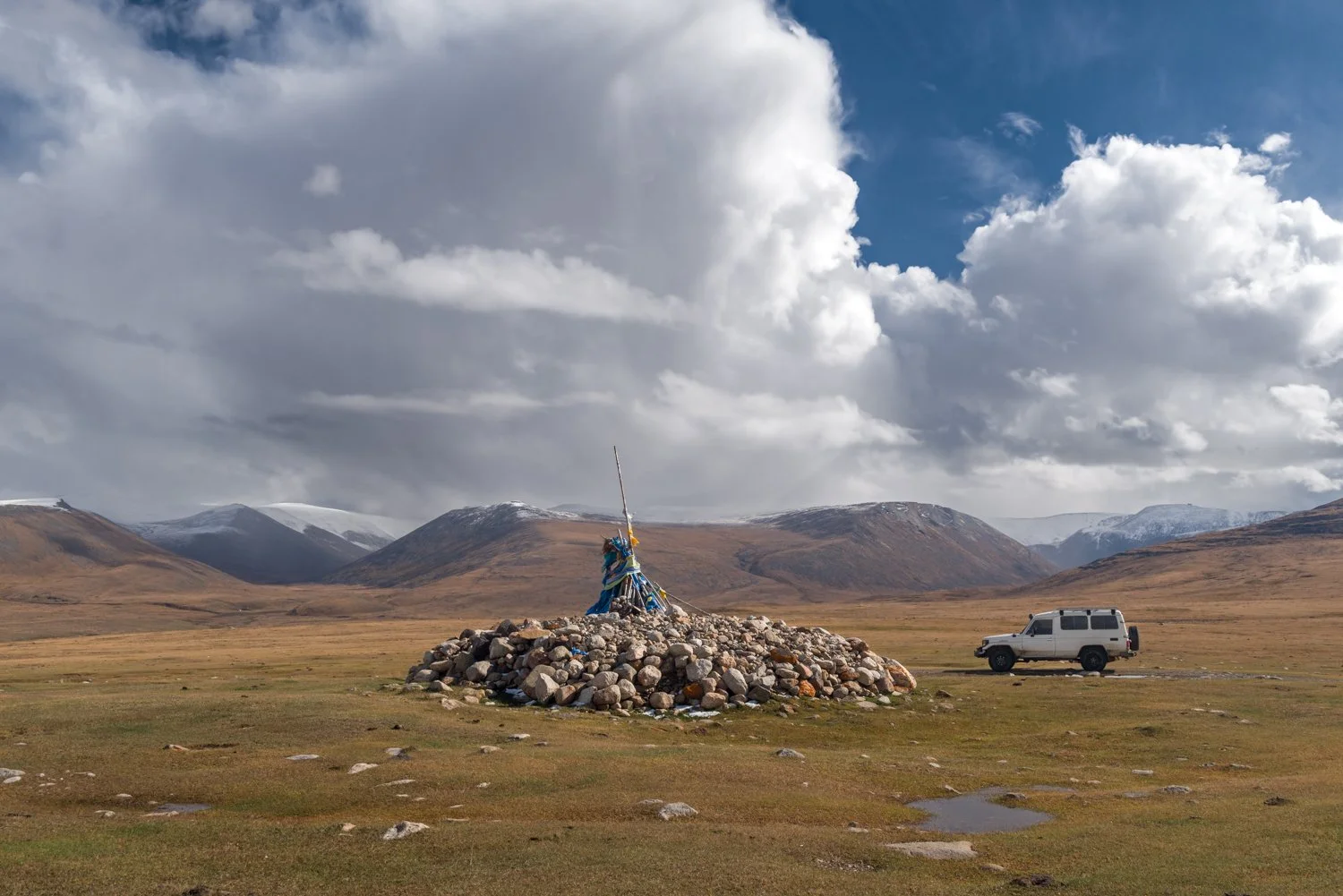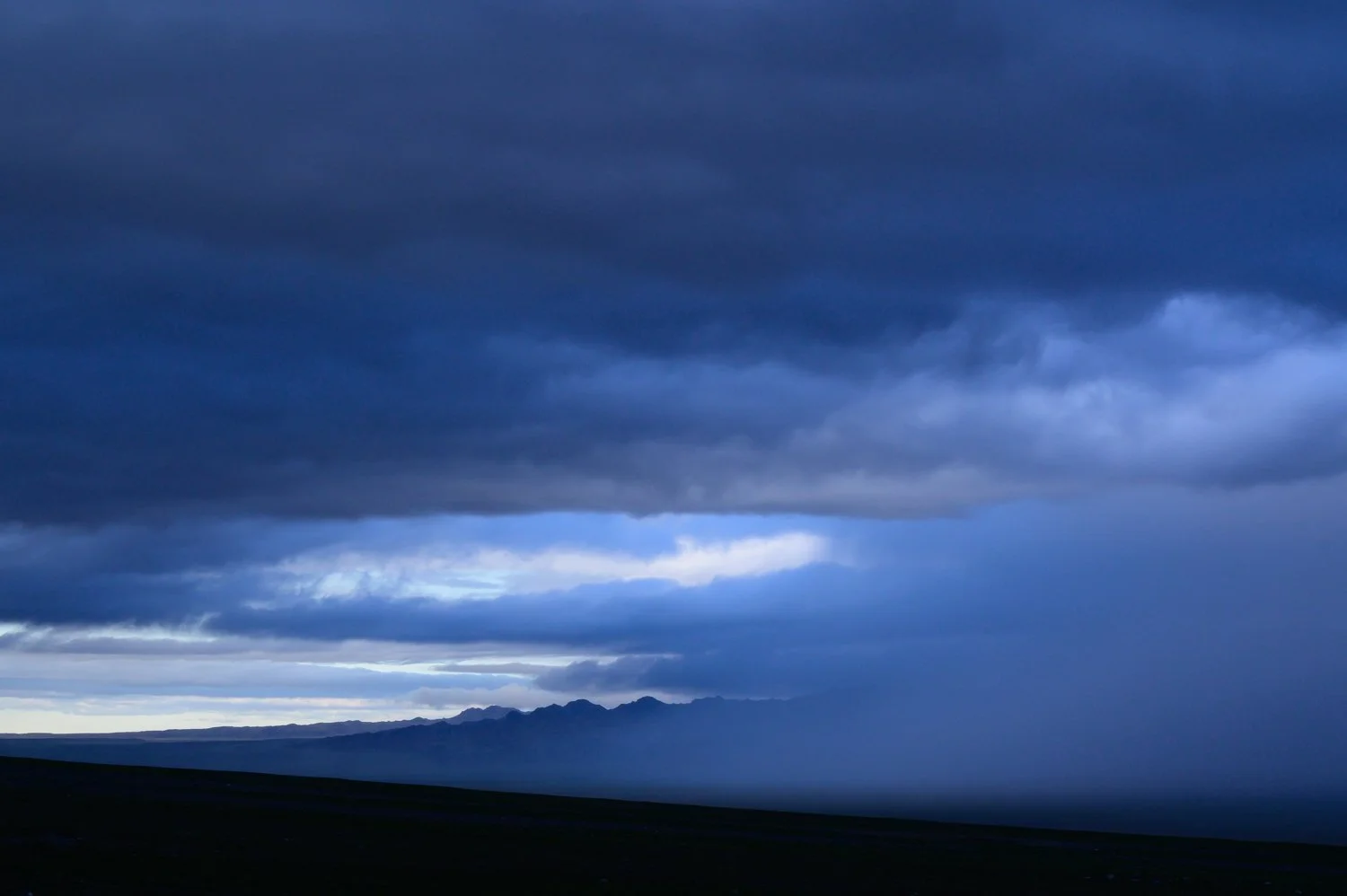Overland high in remotest Mongolia
“We have no brakes.”
“Very funny.”
“No, I’m serious. We have no brakes.” He repeats calmly, but urgently. My friend and guide Baataraa is easy going and always making jokes. I imagine this is yet another as we are at the top of a steep road with a long winding descent, a grassy valley spread out below us.
I jump out of the Landcruiser and run uphill as if still in danger. But Baataraa has expertly turned the truck into the side of the hill on some sand before his calm but urgent announcement. We had only just started down the pitch, perhaps fifty feet, when he realized our front brakes had failed and expertly turned using the parking brake.
We limp the few kilometers back to the last town in first gear, a classic communist style outpost surrounded by red fencing. We find a welder, and in the pivots typical of adventure travel, I spend the day watching Baataraa and the welder take the front brake system of the Landcruiser apart. The truck sits on concrete blocks, as they weld the pieces back together with much debate, without any safety gear. After a false start midafternoon, our trusty team decides to use a cannibalized hose to mend the system as otherwise we are entirely out of commission. It isn’t the right kind but seems to do the trick. Baataraa is covered in brake grease but pleased. I am happy to be on the move but a bit nervous to take on what was already a significant snowy overland mountain pass with brakes that “should” work. But in for a penny.
Earlier that morning, after a lot of debate, phone calls and mapping, we had decided to take a 450-kilometer overland route through the Arhanghki Mountains to meet with the next group of families in the Arhanghki Province to the north. Going through the mountain passes would save us from having to take a long 1200-kilometer route round. The offroad trip was a bit iffy but clearly more interesting, a few days in the backcountry of Mongolia. But mid-September was bringing early cold weather and Baataraa had never driven this route. Snow was possible and river crossings are always uncertain in this area. Additionally, the dirt tracks feather a dozen times a kilometer without any clue as to which thread goes where so a combination of the sun, compass navigation, and offline satellite maps are required for navigation. The Russian military maps which Baataraa typically relies on had gone offline since the start of the Russia Ukraine war, so we were using maps new to him. A breakdown only a few kilometers in was not an auspicious start to our route but breakdowns are inevitable and as we recounted at length on our drive back into town, this was a lucky one.
Back underway, we pass the site of our breakdown, both of us keeping silent as we roll down the steep hill, and cover two more valleys before darkness and a cold rain falls. We choose a small lake for our campsite, and I toss down my tent in the lashing rain. The Gobi Desert, its arid heat, and the morning seem a million miles away. I leave my pants on top of the tent in hopes that the rain will wash them after ten days wear, and climb into my tent, thrashing around in my sleeping bag a bit to generate warmth before falling asleep.
In the morning, I try to unzip my tent but cannot. My canvas tent is rock hard. After a few attempts, I manage to open the zipper and find my pants, while possibly cleaner, are also frozen. They look like the gray ghost of my trekking pants. Already up, Baataraa is laughing at me and shooting a video of me, which is pretty funny as I pop my head up out of the tent like a confused hatchling. But amazing travel companion that he is, he graciously hands me a coffee. He’d decided to sleep in the truck which now seems the wiser move. We walk to the lake to warm up and watch orangish ruddy shelducks call to each other across the glasslike water, likely gathering before their imminent migration across the Himalayas. Winter, it seems, has officially come early to this part of Mongolia which is beautiful but inconvenient. Once the sun melts my pants enough to put them back on, and my tent to roll up, we head out over increasingly large mountain ranges aiming generally due north.
Outside the town of Jargalant hundreds of birds of prey circle over the hills. It is an amazing sight to behold, calling to mind battles or something apocalyptic. There is no carcass in sight, so it seems like they are riding updrafts off of the hills. A skilled biologist, with his binoculars to his eyes, Baataraa calls off bird after bird; ravens, crows, Eurasian griffon, common buzzards, black kites, steppe eagles, golden eagles, lammergeier (lamb vulture) with a massive 9-foot wingspan and the black vulture, even larger. Mongolia is a birder’s paradise and this is an impressive gathering. The birds of prey and scavengers are truly king here. They are essential to the health of the ecosystem, just like the wolves and snow leopards. Bones are strewn across the Mongolian landscape everywhere you walk, some from predation, some dead from dzuds, and most from old age. Dzud’s, a horrific drought in the summer or a killing cold in the winter (far colder than the usual -40F) are becoming increasingly common with climate change. And these birds help to keep the ecosystem healthy and clean. But like the wolves and snow leopards, they can suffer from retaliatory killings, encouraged during the Communist regime.
On the other side of Jargalant, a herd of horses meander by, single file and with purpose, but there are no humans in sight. Livestock is like this in Mongolia, living its life, largely unprotected, or supervised. But horses can fend for themselves against predators. Further up the valley there is a fenced off monument (a shocking rarity in Mongolia-a fence that is), out of place in this remote valley. Up close we can see that they are deer stones, ancient relics from another time. It feels like we have stepped into a time slippage. The stones were erected in the bronze age, likely 1000 BC, and the vertical stones are covered with ornate carvings, still crisp, of red deer and other animals, weapons, and humans. I have read about these type of stones, but standing at this memorials to long dead people in the valley, where they have stood witness to millennia is breathtaking.
We begin the final climb, now at a snails pace as the landscape is strewn with boudlers and small rocks and the track we are following goes around only the largest. A massive ovoo, a teepee-like structure covered in scarves and banners sitting on a stone terrace, flags flapping in the stiff winds marks the highest pass. The sacred structures come from Mongolia’s shamanistic beliefs, now melded with Buddhism, and serve as way finders and prayer points. Standing by it, the wind whips my hair out behind me, mirroring the ravens that seem to sit on the air currents just above at ease in the snowy cold. The mountains and ravines are thick with snow and the ravens are our only company at this elevation, around 12,000 feet, we are at the border between Bayankhongor and Arkhanghi Province. As we begin our slow descent, far below huge herds of yaks spread across the valley with a single rider. With their wooly tails held high and their playful gallop, baby yaks look like bankhar dogs from a distance. The light in the valley is otherworldly, golden beneath the blue and gray storm clouds. For hours we follow a thread of a stream as it gradually becomes a river winding down the valley, braiding and splitting. It feels like we are in a Bierstadt painting with the impossible golden light breaking through storm clouds, green valleys, snowcapped mountains, and the river winding its way through them. It is hard to take in. And in someway more like Montana or Iceland than what I expected to see in Mongolia, although there are the yaks. Either way I know I am smitten because I am doing that thing where I start imaging where I want to live.
We set up camp early well outside a small town, making a hearty soup and warm tea with the last of the sea buckthorn honey. I put on every article of clothing I have brought and we sit in our chairs by the truck. I had packed for a range of 35’F to around 90’F feeling this should be adequate, but the unseasonably early winter is making me think longingly of my winter puffy coat stored nicely back in Boston. Tomorrow we will start meeting with the Arkhanghi families, and their bankhar dogs. Unlike the relatively solitary Gobi, families here live in communal groupings as the mountainous region offers livestock rich forage and water sources, but also more predators.
Laying in my tent, looking up at the stars briefly before I zipper up the canvas overhead, I understand why animism* has been a strong belief in Mongolia for millennia. I understand why the sky, the mountains, and the rivers are sacred. Why nature is sacred. But it is also the silence which feels sacred in their presence. The silence is profound. In my brief time here I have learned to listen to the silence. I can hear the wind and the subtlest changes in the silence. I have become familiar with the sharp flapping of a ravens’ wings, carving the air as they approach. And like the ever-watchful guardian dogs I have met, because of the silence I have become attuned to slightest change in the soundscape or movement a dozen kilometers off, long before the shape materializes into a form, a dog, a motorcycle, or a car. (In Mongolia the car is always a Prius.) To be so present, so aware, it's a necessity for the animals, but for me it is a true gift. One I do not want to lose but seems unavailable anywhere else so I will bask in it.
I take a last sip of my sea buckthorn tea, close my eyes, and listen to the silence.


